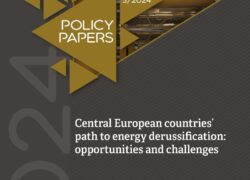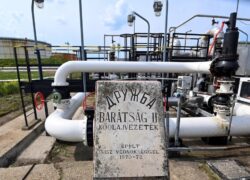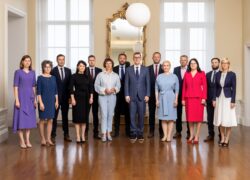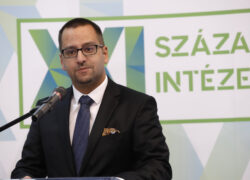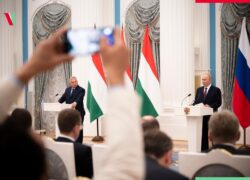The civil defence system in Estonia is part of a comprehensive model of security, in which society actively participates in the process of building the country’s resilience and is able to respond independently to military and non-military challenges. The peculiarities of the country’s civil defence system are: 1) the use of innovative communication solutions; 2) the promotion of citizen participation in volunteer organisations; and 3) the promotion of patriotic values, which brings Estonia closer to the model of Finland.
Civil defence in Estonia’s security policy. Civil defence refers to the readiness of the state and society to notify citizens of threats, undertake rescue operations, evacuate, provide shelter, and offer medical first aid as well as social support in emergency situations. It is part of a broad conception of security, the provision of which depends not only on military capabilities, but also on non-military ones, including the effectiveness of public institutions and the actions of the private sector and civil society (“IEŚ Commentaries”, no. 800). From this perspective, civil defence is one component of a comprehensive – total – view of security, which consists of military defence, international action, domestic and internal security, maintenance of the continuous operation of the state and society, and strategic communication (“IEŚ Commentaries”, no. 824). This type of framing, originally used during the Cold War by the Kingdom of Sweden, is mainly characterised by states with limited defence capabilities, for which defensive actions are important.
In practice, civil defence consists of increasing resilience, mutual aid, and self-reliance in a crisis situation, as well as active public participation and support for military resources during an armed conflict. This resilience is shaped both by state and public institutions (construction of the required infrastructure, including early warning systems and temporary shelter points, carrying out rescue and evacuation operations), private enterprises, non-governmental organisations, as well as efforts of local residents (including the use of private cars to evacuate the population, providing medical first aid and assistance to the disabled during a crisis, storing food).
Development of the civil defence system in Estonia. Currently, the Estonian Civil Defence Concept of 2018 reflects a comprehensive approach to security, in which both public services and the public share responsibility for the sustainability and functioning of the state. In addition, in 2024, in response to the ongoing Russian-Ukrainian war, the Estonian government approved a framework document on the country’s crisis preparedness and civil defence action plan for the next four years. It sets out goals including: 1) increasing the awareness and readiness of residents to deal with difficult situations; 2) developing an early warning system; 3) supporting the capacity of local governments; and 4) increasing the efficiency of public institutions and guaranteeing the continuity of their services.
At the national level, the Government Office and relevant ministries, particularly the Ministry of the Interior, are responsible for ensuring internal security, public order, civil protection and border security. At the local level, these functions are carried out by local governments. The Estonian Emergency Council, regional emergency centres, and other services supervised by local governments also play an important role. Thus, in emergency situations, the activity of institutions is based on the principles of decentralisation, subsidiarity, responsibility for particular tasks, and cooperation. Starting in 2021 – as a result of the COVID-19 pandemic – the Estonian Reserve Centre was also established.
Innovative civil defence. Estonia – one of the most digitised countries in the world – uses modern technology in its civil defence system. In particular, the innovative emergency notification system, introduced in 2023, is expected to improve the speed and accuracy of information as well as the clarity and comprehensibility of messages. Currently, information is automatically transmitted to all mobile devices located within a specific area, as well as to the editorial offices of ETV and ETV+ public television channels and Vikerraadio and Radio 4 radio channels. Indeed, data published in 2019 indicated that radio and television remained the most common source of emergency information (79% and 78%, respecitvely) (Kantar Emor). In addition, a so-called “pocket siren” project is expected to be launched soon, which will deliver threat messages to mobile devices even when the phone is switched to silent mode or the mobile operator’s network is not working.
On the website Ole valmis! (Be ready!), citizens can find essential information on how to behave in various situations – emergencies (theft, fire), natural disasters (storms, power and water outages), cyber attacks, and others. In addition, the mobile app of the same name, developed by the Women’s Voluntary Defence Organization in 2018, is available in three languages (Estonian, Russian and English) and also works offline. As of May 2024, the app also reports on potential threats from the air (aircraft, drones, helicopters, etc.).
Active citizen involvement. A comprehensive approach implies the active participation of citizens in ensuring the security of the country. The key, therefore, is public involvement, with volunteers participating in civil defence according to their skills, abilities and knowledge. The Estonian system provides several ways to support state institutions and public services, including participation in the Defence League (a volunteer military organisation), volunteer police, and rescue services. Estonia also supports activities related to so-called passive resistance, which involves not only shaping the resilience of society when the cost of armed struggle is too high but also promoting patriotism. In this case, the Be Ready! app recommends: refusing to cooperate with the aggressor, ignoring regulations, participating in protests and demonstrations, distributing leaflets and posters, social media campaigns, disrupting transport and supply lines, sabotaging machinery and infrastructure elements, as well as civilian support of the armed forces (e.g. food supplies, medical supplies, accommodation).
Conclusions
1. The civil defence system in Estonia is part of a comprehensive model of security, in which the active role of society is to participate in the process of building the resilience of state institutions and developing its own capabilities and capacities to support these institutions. Thus, the system is designed to ensure the sustainability of the state in a crisis situation (functional aspect), as well as to promote patriotism and cultivate the values of Estonian culture (axiological aspect).
2. Estonia assesses threats from Russia as existential and long-term. While a military attack is currently unlikely, it depends on factors such as Russia’s successes on the Ukrainian front and NATO’s deterrence capabilities. Additionally Russia continues its hostile hybrid activities including migration pressure, disinformation in the media space, illegal tanker traffic in the Baltic Sea threatening the environment and civilian security (“IEŚ Commentaries”, no. 1042), and cyber attacks or GPS disruptions (“IEŚ Commentaries”, no. 1043). Moreover, Estonia points to the possibility of failures in telecommunications systems, power outages, and the spread of viral diseases that could contribute to crises.
3. Estonia is shaping its civil defence system along the lines of Finland, where legislation and the division of authority among institutions are more transparent, and the emergency information system and shelter infrastructure are much better developed than in Estonia. Finland, for example, provides shelters for about 85% of the population (in Helsinki the figure exceeds 130%), while in Estonia the coverage is approximately 5-7%[1]. The problem of the lack of shelters was also pointed out by the Ministry of the Interior in its Civil Protection Plan for 2022-2023[2].
4. Emergency services are among the best-rated public institutions in Estonia, trusted by 96% of the population, compared to 86% each for the police and border guards, and 76% for the Defence League (Eesti Uuringukeskus OÜ, 2023). This high level of trust reinforces the potential of civil defence and the ability to respond quickly to emergencies. For many years, the Estonian Emergency Council has been an active participant in the work of the Civil Protection Network (CBSS), which aims to build a common culture of social security in the Baltic Sea region, developing a common approach to threats, including prevention, preparedness and response, as well as coping with emergency situations.
5. Estonia is making efforts to strengthen awareness and share knowledge of how to manage emergencies. Reports from the Estonian Emergency Council (2017, 2019, 2021 and 2023) indicate that the situation in this regard is gradually improving, but the population’s crisis preparedness remains low (15% of the population rates their preparedness for an emergency situation well). The Ministry of the Interior’s goal is to increase this level to 40% over the next decade.
[1] J. Mägi, Elanikkonnakaitse võrdlus ohuteavituse ning varjumise korralduse aspektist. Eesti ja Soome riigi näitel, https://dspace.ut.ee/server/api/core/bitstreams/9335ecd9-b71f-494e-8672-94e9d147b8e9/conten; ERR, Estonian Rescue Board unveils nationwide public shelters online map, https://news.err.ee/1608862433/estonian-rescue-board-unveils-nationwide-public-shelters-online-map [23.07.2024].
[2] Elanikkonnakaitse plaan 2022–2023, https://www.rescue.ee/files/2022-04/2022.04.06-elanikkonnakaitse-plaan.pdf [23.07.2024].


